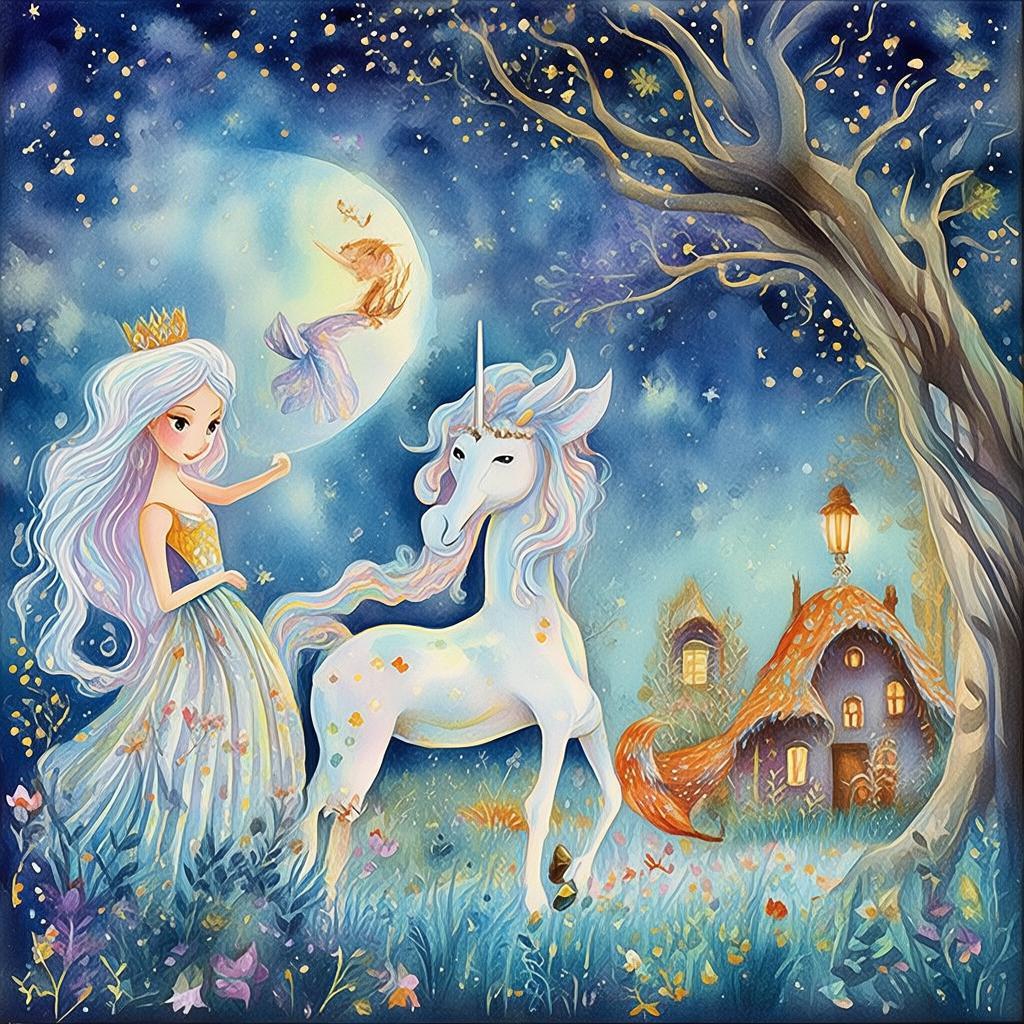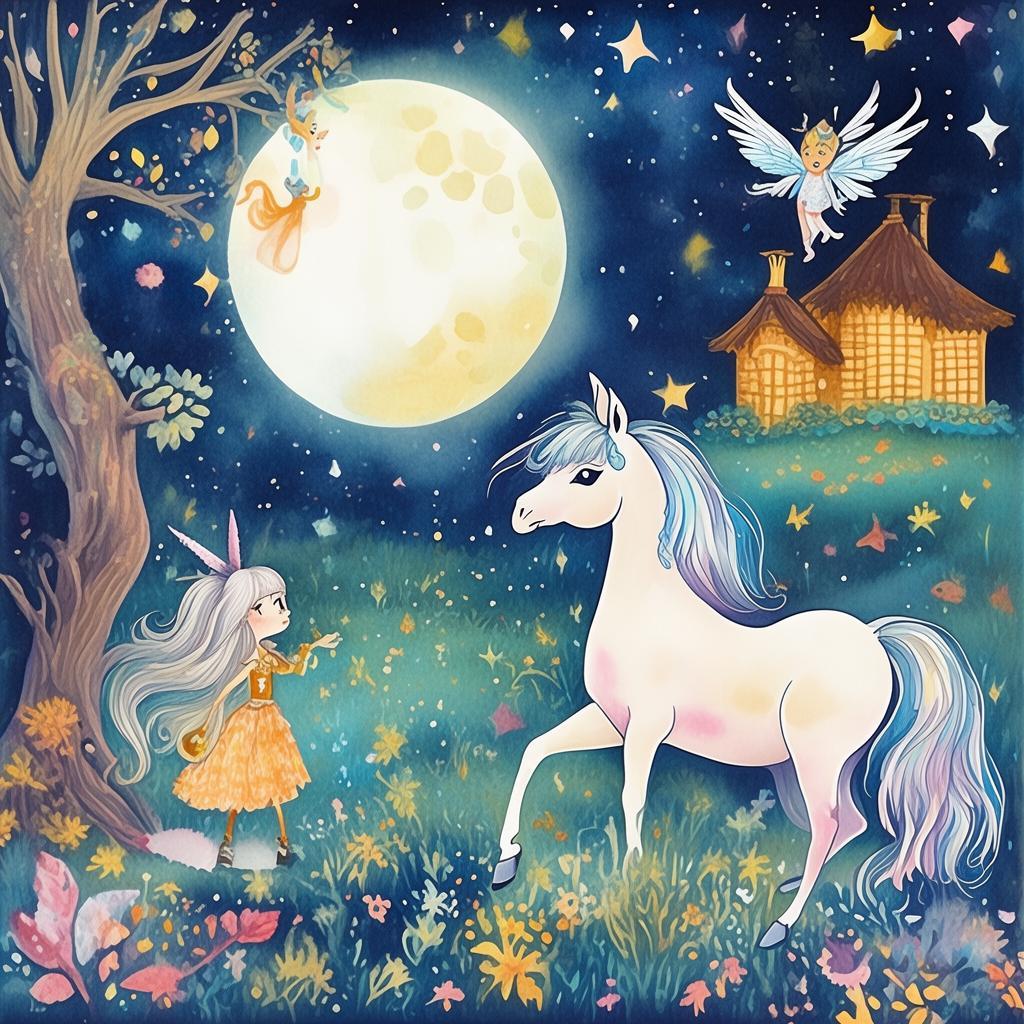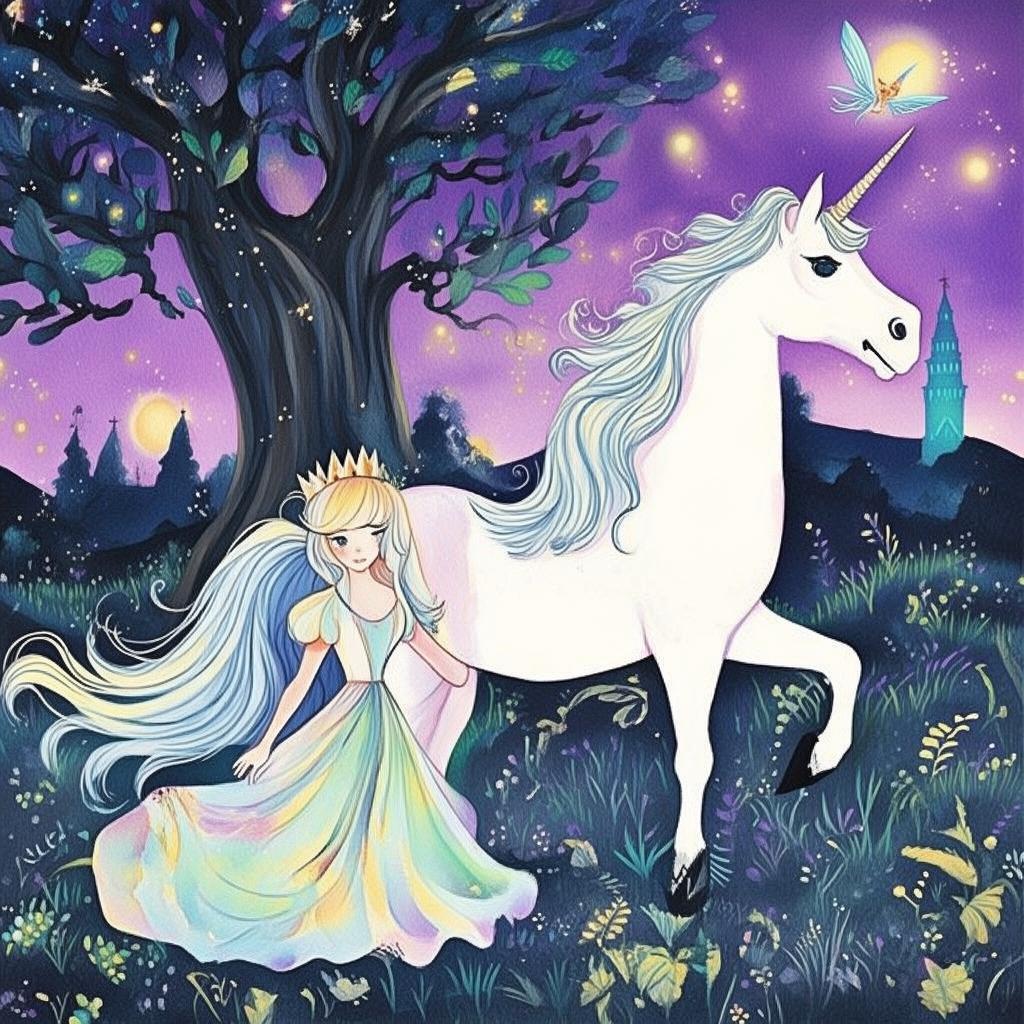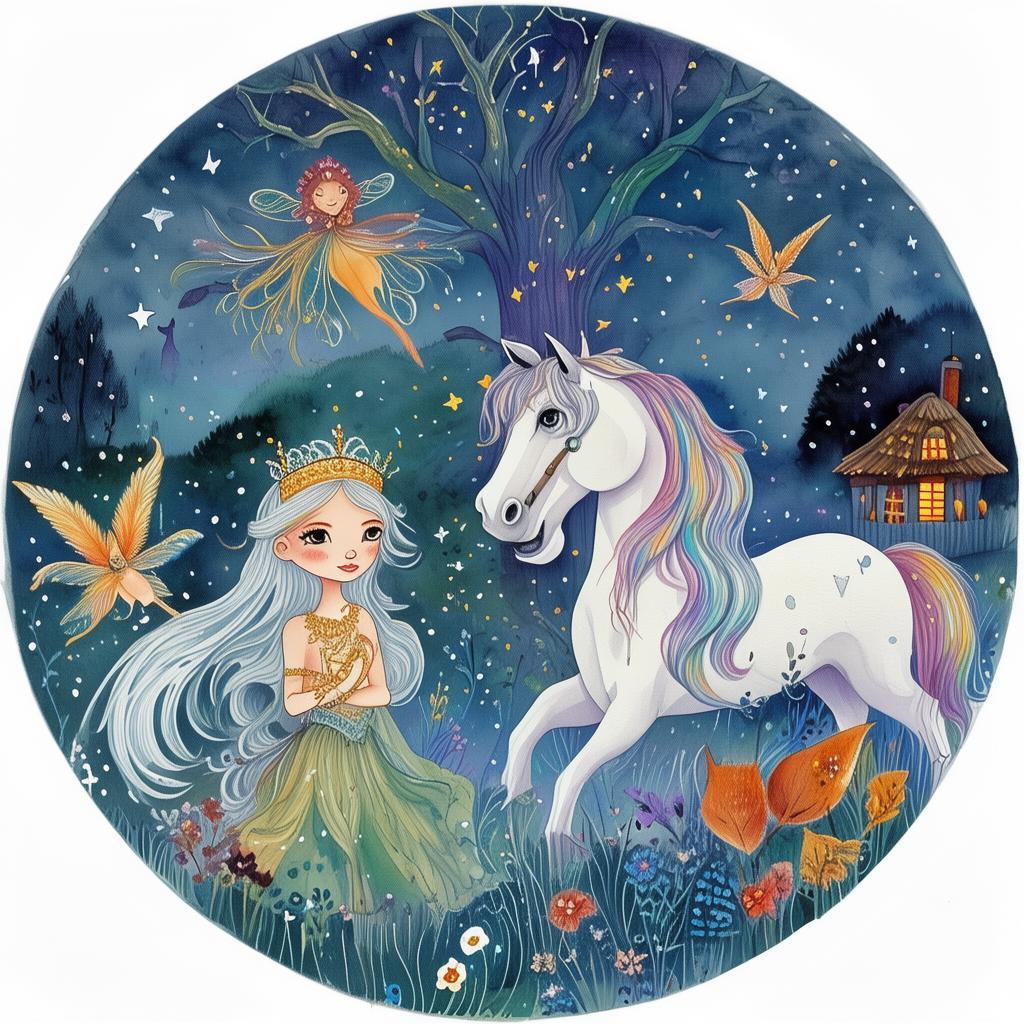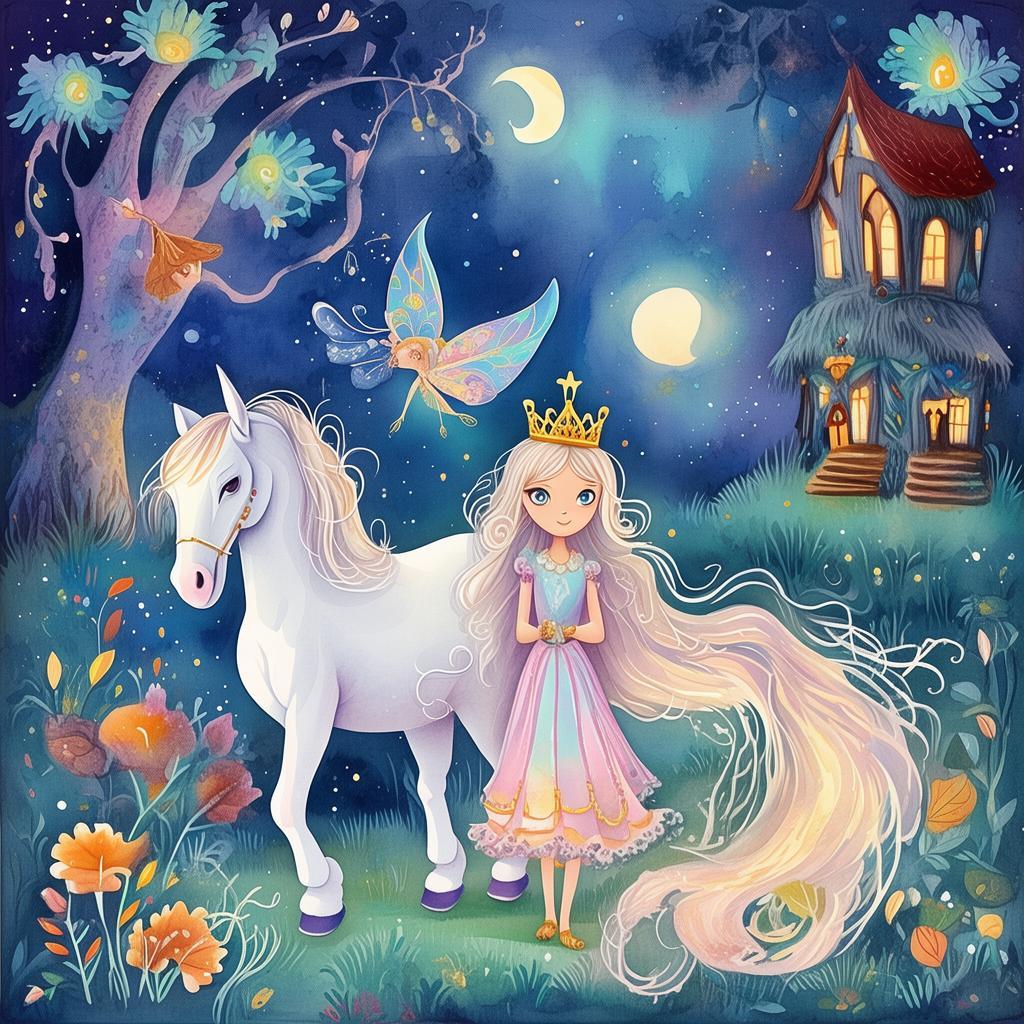The Pen That Danced in Shadows
In the heart of the ancient city of Lumina, where the streets were woven with the stories of a thousand lives, there lived a girl named Liora. Her fingers, nimble and artistic, danced across the canvas with a freedom that few could claim. Yet, behind her wide, curious eyes, there lingered a sadness, a sorrow that clung to her like the mist that clung to the cobblestone streets on the chilliest mornings.
Liora was a sketcher, but not of the world as it was. She was a sketcher of the shadows, capturing the essence of darkness in her art, a stark contrast to the vibrant colors she saw around her. Her family, while they loved her, couldn't fathom her fascination with the darkness, the shadows that whispered tales of the unknown.
One evening, as the moon hung low in the sky, casting its silver light over the city, Liora stumbled upon an old, dusty sketchbook tucked away in the back of her attic. It was leather-bound, its edges worn from years of use, and there was a strange, otherworldly glow emanating from the cover. Without thinking, she opened it, and to her astonishment, the pages were blank.
With a touch of her pencil, she drew a simple circle. But as her hand moved, the circle grew, the lines of the drawing bending and twisting like serpents in the dark. And then, as if by magic, the circle was filled with shadow, deep, dark, and consuming.
Liora's breath caught in her throat. The sketchbook was enchanted, a fact she couldn't deny as the shadows seemed to dance and move within the circle, a life of their own. She was drawn to it, compelled to draw more, to delve deeper into the world the sketchbook revealed.
Each night, she would spend hours with the sketchbook, her pencil tracing the lines of her imagination, and each drawing seemed to grow more complex, more haunting. The shadows would twist and turn, forming shapes and faces that spoke of a world Liora had never known. But as the drawings grew, so did her despair.

She began to see the shadows not just as art but as reflections of her own soul. The darkness was a manifestation of her fears, her doubts, and her regrets. Each drawing was a confrontation with a part of herself that she had long suppressed.
The city began to talk, whispers of the enchanted sketchbook that painted with shadows spread through the streets. The townsfolk were wary, their eyes casting shadows of their own as they spoke of the girl who sketched in the dark.
Liora's family, concerned for her well-being, tried to discourage her, to pull her away from the sketchbook. But she was drawn to it like a moth to flame, unable to resist the pull of the darkness. She needed to know more, to understand why the sketchbook held such power over her.
As the days turned to weeks, the shadows in her drawings became more sinister, more foreboding. She drew a forest, and it became a place of despair, the trees twisted and gnarled, their branches reaching out like greedy hands. She drew a river, and it became a churning, dark abyss that threatened to swallow her whole.
One night, as she worked, the sketchbook opened itself, the pages turning without her touch. And there, in the darkness, she saw her own reflection, not as the girl with the wide, curious eyes, but as a woman, older, her face etched with the lines of sorrow and regret.
She realized then that the sketchbook was not just a source of art but a mirror to her soul. It held the key to her past, the secrets that she had locked away. To truly understand the sketchbook, she would have to confront the darkness within herself.
With trembling hands, she drew a final image, a crossroads where two paths diverged. One path led to the light, to the life she had always known. The other led into the darkness, to the unknown, to the shadows that had become her closest companions.
She took a deep breath and chose the path into the darkness, the sketchbook clutched tightly in her hands. And as she stepped forward, the shadows around her began to change, to shift, to reveal the truth of her past, the reasons behind her sorrow.
In the end, Liora found that the sketchbook was not a source of despair but a catalyst for change. It showed her that the darkness was not to be feared, but embraced, as it held the power to transform and to heal. And with the pen that danced in shadows, she found her voice, her truth, and her art found its light.
As the sun rose the next morning, casting its warm light over the city, Liora emerged from the darkness, her soul lighter, her heart filled with hope. The sketchbook, now empty, lay beside her, a testament to the journey she had undertaken. And in her hands, a new sketchbook appeared, filled with blank pages, ready to be filled with the light and the dark, the joy and the sorrow, the life that awaited her.
The Pen That Danced in Shadows is a tale of art and self-discovery, a story of a girl who learns that the darkness within is not to be feared but embraced, and that true art comes from the courage to face the deepest fears of the soul.
✨ Original Statement ✨
All articles published on this website (including but not limited to text, images, videos, and other content) are original or authorized for reposting and are protected by relevant laws. Without the explicit written permission of this website, no individual or organization may copy, modify, repost, or use the content for commercial purposes.
If you need to quote or cooperate, please contact this site for authorization. We reserve the right to pursue legal responsibility for any unauthorized use.
Hereby declared.




